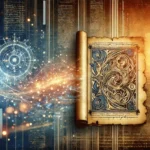Korpenpelloz is a name wrapped in mystery, sparking curiosity among those who encounter it. Is it an ancient myth whispered through generations, a lost legend waiting to be rediscovered, or merely a product of imagination? With no clear origins or definitions, its meaning remains open to interpretation. This uncertainty fuels speculation, drawing in those who seek hidden truths.
Throughout history, myths and legends have shaped cultures, inspiring awe and wonder. Korpenpelloz may be one such enigma—blurring the lines between reality and fiction. But does it hold deeper significance, or is it just a fleeting illusion?
The Origins of Korpenpelloz
The origins of Korpenpelloz remain clouded in uncertainty; meanwhile, it sparks endless debate. For instance, some believe it stems from ancient folklore, passed down through generations as a hidden truth lost to time. On the other hand, others suggest it is a fictional creation—perhaps a name woven into literature or art to invoke curiosity. Nevertheless, without historical records to confirm its roots, Korpenpelloz continues to exist in a realm of speculation.
Additionally, another theory ties it to a forgotten cultural phenomenon, once significant but now obscured by time. For example, could it be linked to a secret society, a lost civilization, or an abstract philosophy? Indeed, its ambiguity allows for limitless interpretations, making it a fascinating puzzle. Ultimately, whether rooted in history or imagination, the mystery of Korpenpelloz only deepens with each new perspective.
Korpenpelloz as a Myth
Korpenpelloz has long been whispered about as a myth, existing in the hazy space between folklore and fantasy. Some claim it originates from ancient legends, where it symbolized hidden knowledge or an otherworldly force. Without tangible evidence, its existence remains unproven, yet stories continue to breathe life into its mystery. The lack of records only fuels speculation, making it a topic of intrigue for storytellers and historians alike.
Like many myths, Korpenpelloz may have been shaped by oral traditions, evolving with each retelling. Some believe it represents a lost realm or an unseen entity, while others argue it was merely a metaphor woven into old tales. Its elusive nature allows people to attach their own meanings, transforming it into something deeply personal yet universally enigmatic.
Despite its mythical status, the fascination with Korpenpelloz endures. Whether a forgotten legend or pure imagination, its allure lies in the unanswered questions it leaves behind.
Korpenpelloz as a Legend
Legends often carry a sense of truth, blurred by time and interpretation, and Korpenpelloz is no exception. Some believe it was once a real phenomenon, later exaggerated into grand tales passed down through generations. Others suggest it was linked to an extraordinary figure or event, its details lost in the folds of history. Unlike myths that exist purely in imagination, legends tend to have a root in reality, making Korpenpelloz a subject of endless debate.
Throughout the years, different cultures have shaped their own versions of Korpenpelloz, adding unique details to fit their narratives. Some accounts describe it as a powerful force, while others depict it as an ancient secret waiting to be uncovered. The mystery surrounding it only deepens as new interpretations emerge, ensuring that Korpenpelloz remains a compelling legend that continues to captivate curious minds.
Korpenpelloz as Pure Imagination
Some argue that Korpenpelloz is nothing more than a product of human imagination, born from a desire to explain the unknown. Without historical records or physical evidence, skeptics dismiss it as a fabricated idea that evolved through storytelling. Over time, fascination with the mysterious has kept such concepts alive, allowing them to take different shapes in various cultures.
Despite the lack of proof, the power of imagination gives Korpenpelloz meaning. Whether as a symbol of creativity or a reflection of human curiosity, it continues to spark discussions. Stories often outlive facts, and even if Korpenpelloz has no real origin, its existence in folklore proves that imagination alone can shape ideas that last for generations.
Cultural and Modern Significance
Korpenpelloz has left a lasting mark on cultural narratives, inspiring folklore, literature, and artistic interpretations. Its symbolism varies, representing mystery, transformation, or even cautionary tales across different traditions. Some communities embrace it as a link to their heritage, passing down stories that keep its essence alive.
In modern times, Korpenpelloz has evolved beyond myths, influencing contemporary art, media, and even philosophical discussions. It serves as a metaphor for the unknown, sparking curiosity and debate. Whether viewed as an ancient legend or a creative concept, its presence continues to shape cultural expressions, proving that stories—real or imagined—have the power to endure and adapt through generations.
Conclusion
Korpenpelloz remains an intriguing enigma, blurring the lines between myth, legend, and pure imagination. Whether rooted in ancient folklore or a modern fabrication, its influence continues to captivate minds. Some see it as a reflection of cultural identity, while others view it as a symbol of human creativity. Regardless of its origin, the fascination with Korpenpelloz endures, proving that stories—real or imagined—shape our perceptions. In the end, its true nature may never be fully understood, but its legacy lives on in those who seek to uncover its mystery.
FAQ’s
1. What is the origin of this concept?
Its origin is uncertain, with some tracing it back to folklore while others see it as a product of pure imagination.
2. Is there any historical evidence supporting its existence?
No verified historical records confirm its existence, making it a subject of speculation and debate.
3. Why is it often considered a myth?
Like many ancient myths, it is believed to have been passed down through generations, evolving into different versions over time.
4. How does it relate to legends?
Legends often mix reality with fiction, and this concept has been portrayed as a legendary element with deep symbolic meaning.
5. Could it be purely fictional?
Yes, some argue that it is entirely a creation of human imagination, with no basis in real events or history.
6. How does it hold cultural significance?
Over time, it has become a symbol of mystery and curiosity, influencing literature, art, and storytelling traditions.
7. Why is it still a topic of discussion today?
Its ambiguity allows for various interpretations, keeping it relevant in discussions about myths, folklore, and creative narratives.







